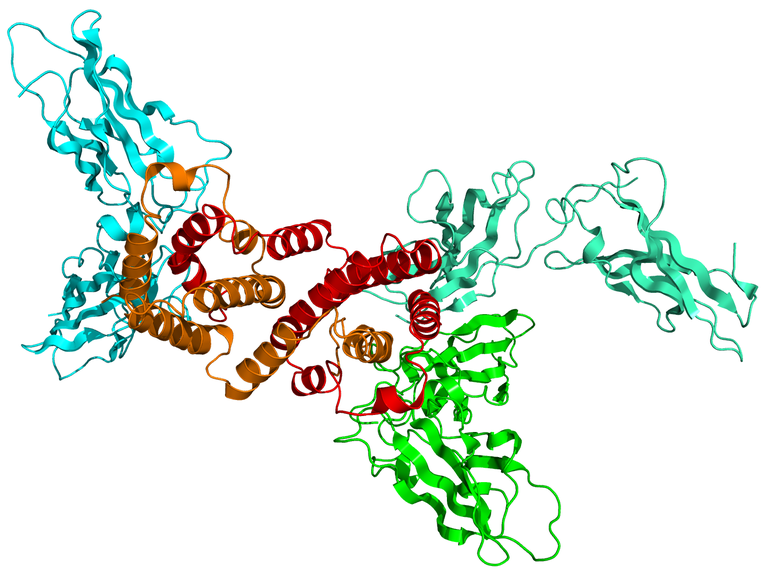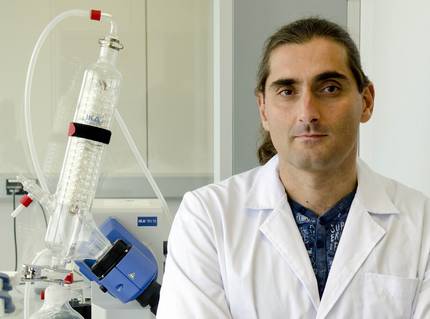Deciphering the molecular mechanism of membrane receptors
The membrane of our cells shows proteins outside. These membrane receptors bind to hormones, neurotransmitters, etc. and pass the message of these molecules into the cell. They are gatekeepers of our cells. It is not surprising, therefore, that about 70% of the drugs currently manufactured are designed to be attacked by membrane receptors. A new study published in the journal Cell reveals the interaction between receptors and lipid nanodomeins of the membrane and can be key to understanding the molecular mechanism that regulates the activity of these membrane receptors.

In 2008, health reports from 11 children arrived at researchers. All of these children had a dysfunction caused by mycobacterial infections. They realized that everyone had the same mutation in a membrane receptor, which knows gamma interferon. Interferon gamma intervenes in the immune response, so the existence of a mutation in its receptor made the cells not resist bacterial infection.
“As a result of this mutation, the cellular machinery adds to the membrane receptor a sugar at that specific point, blocking the activity of the receptor,” said Xabier Contreras, researcher at the Biophysics Unit (UPV/CSIC) and one of its authors. “The recipient is not functional because he is not where he has to be. When the protein called galectin detects sugar, it takes the receptor and transforms it into the membrane.” The key to the receptor being active is that it is in special areas of the membranes – lipid nanodomeins – from which galectin extracts. The research has served to find out where medicines can be developed for those who have that mutation, since researchers have seen that the receptor is functional, since although it is a mutation, it does not change place.
However, the echo of the research is due to the way the receptor is associated with the lipid nanodomeines of the membrane. “Cell membranes are like an ocean,” explains Xabier Contreras, “in which there are small islands. Membrane proteins can be present anywhere in the ocean, but only when they are in them. When they are outside these areas made up of certain lipids (mainly composed of cholesterol and sphingolipids), they cannot function." This study clarifies that interferon gamma receptors are associated with these nanodomegens. "If in the future we get to know what leads the receptor to these nanodomegens and why it is active/inactive, we would be able to interrupt or increase cellular signalizations acting on the receptors," said the researcher of the Biophysics Unit.
The membrane is key
At first, when the plasma membrane was described, it was thought to be an inert barrier separating the inside and outside of the cell. Subsequently, it has been shown that it is essential to maintain the integrity of the cell and, in addition, the structure is totally dynamic.
“Lipids are constantly moving at a very small time scale, between a microsecond and ten nanoseconds. They are like a big city where everyone turns from one place to another. Some cross the road, others meet and interact… That makes everything very dynamic and well regulated.”
“Not only that, but thanks to the advances that have been made in lipidomics, we now know that there are about a thousand species of lipids. 25% of the genome has the function of synthesizing, regulating and transporting this unlikely diversity of lipids. But we still don't know why this diversity exists," adds Xabier Contreras. Why do we have so many lipids if in fact three or four types of lipids are enough to form a membrane?”
They are not yet clear why there is so much diversity, but they know that this diversity is very regulated: each cell organelle has its specific lipid composition. Thus, each protein has a signal that indicates which membrane it should attend, since in it there will be lipids that will allow it to fulfill its function.
“What we are now investigating is what makes these proteins associated with lipid islands, but it is very difficult to clarify because the interaction only lasts a few microseconds.”
Buletina
Bidali zure helbide elektronikoa eta jaso asteroko buletina zure sarrera-ontzian












